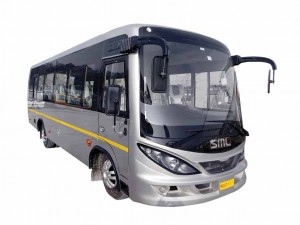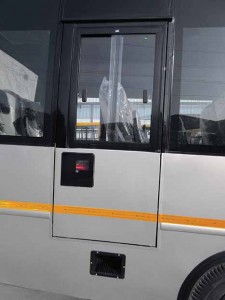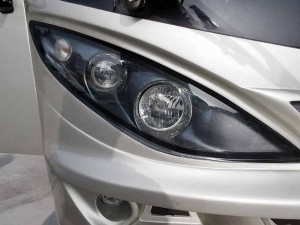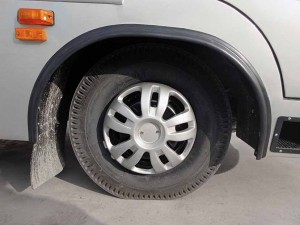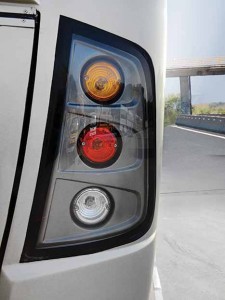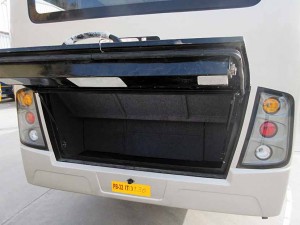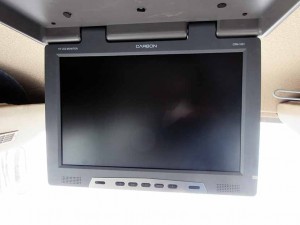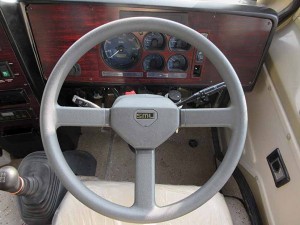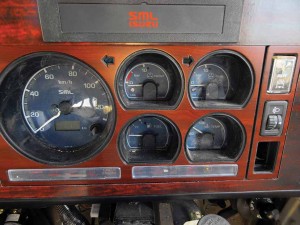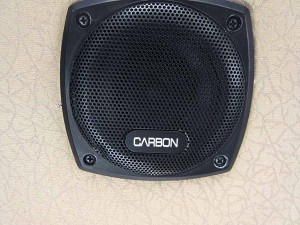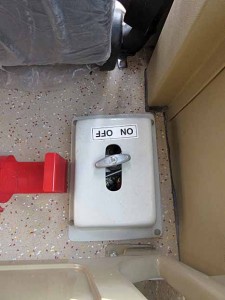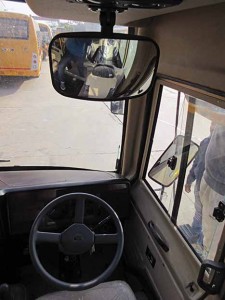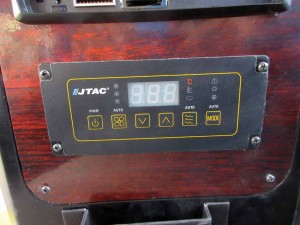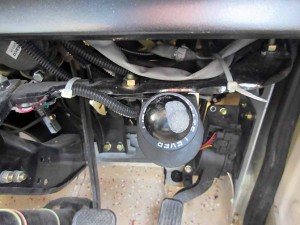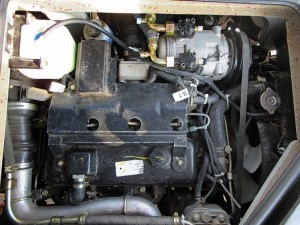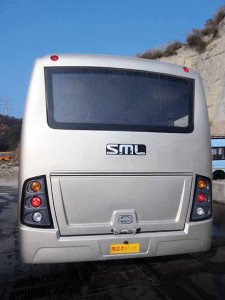To address the need for executive travel, SML Isuzu has introduced an executive coach based on its highly popular S7 platform.
Story & photos: Anirudh Raheja
With a 7500 kg gross vehicle weight, the SML Isuzu Executive LX Coach seats 19 people in high levels of comfort. If the push back luxury seats are replaced with semi-reclining seats, the coach can accommodate between 28 and 30 people. Based on SML Isuzu’s S7 platform, which has sprang numerous derivatives including a range of school buses, the executive coach incorporates the updates the Ropar-based commercial vehicle manufacturer has subjected its S7 platform too. The Executive LX Coach is thus a combination of new and familiar.
Appearance
In terms of appearance, ‘modish’ could well be the word. A large windshield that extends way down dominates the front fascia. It also signals a clever use of glass to ensure good visibility ahead as well as add a dash of style to what would otherwise have been a boxy structure. Designed and engineered to accommodate as many people, the Executive LX Coach looks modern and smart. Its front FRP fascia, seems to strike a resemblance with an Executive LX bus built on the same, S7 platform, but with a shorter wheelbase of 2815 mm. The streaked, twin-beam head lamp assemblies add a touch of style, and as does the bumper. It is an integral part of the front fascia. SML Isuzu sources claim that the Executive LX Coach is aimed at tourist and staff transport. The good fit-finish levels will provide this coach an ability to attract both, the tourist and the staff bus commuters. Seeming to carry an amount of influence of the bigger Isuzu FR1318 bus, the Executive LX Coach flaunts fixed side windows. They are glued and provide a pillarless look, like that of the Isuzu FR1318! Measuring 8,291 mm in length, 2,262 mm in width and 3,060 mm in height, the Executive LX Coach looks well proportioned. Its wheelbase measures 4,240 mm. The body structure of the front-engine bus is made of reinforced steel. Riding on 16-inch wheels, the coach has an emergency exit door at the rear-right. Complying with the bus code, the rear fascia of the coach, sports a hatch with the tail lamp consoles on either side. There is a small windshield at the rear. Its functional value is however not clear. Opening the hatch hinged at the top provides access to the storage space. It is big enough to store the bags of all those who could ride this coach.
Air-conditioned
If the fixed windows provide a clue, the Executive LX Coach is fitted with a Trans ACNR 25 kW roof top air-conditioner. Entry into the coach is through a pneumatically operated door on the left. The low step entry makes it easier to get into the bus and get down from the bus. The first impression upon climbing inside is the good fit-finish levels. This particular coach came fitted with 2×1 push-back seats. These were arranged across five rows. The seats have been procured from Harita Seating Systems, and come with padded arm rests and footrests. Each row of seats is provided with two mobile charging points to address the needs of commuters. The hat racks have air-con ducts running through them. Above each row are a bank of adjustable AC vents and reading lights. Also built into the hat rack are the speakers. A 19-inch, foldable LCD panel is built into the roof. For emergency evacuation, a red button has been placed in the passenger compartment. On the pillars is a hammer painted in red. This could be used to break the window glass in case of an emergency.
In-line with the other S7 (platform) variants, the Executive LX Coach does not have a full driver partition. The front passenger seat could be reached by stepping past the lid, which provides access to the engine compartment below. This lid is flush with the floor! Even the driver could choose to take this route to his cockpit or climb in through the dedicated door provided to him. Built at SML Isuzu’s bus building facility at Ropar, the driver cockpit of the Executive LX Coach will look familair to those who have been in an S7 (platform) bus, or have piloted one. It is not a complicated place to be in. It is not a place that is buzzing with a lot of electronics; digital stuff, that is.
At the wheel
The driving position of the Executive Coach is commanding. The large front windshield provides a good view of all that lies in front. Ergonomically well engineered, the dashboard, as part of the driver’s cockpit is functional and simple. It flaunts a faux-wood and black surface finish. The instrument console is made up of a large speedometer, front and rear air pressure gauge, and fuel and engine temperature gauge. A strip at the bottom of what could be defined as a simple looking conolse, is a strip that contains the warning lamps. To the right of the instrument console is the head lamp height adjustment switch. The center console has an array of buttons followed by a music system and the AC controls. The three spoke steering wheel is a carry over from other S7 buses. Below the steering wheel, and to the left, is a blue coloured knob that switches on or off the pneumatic control system of the passenger door entry. Above the driver’s seat is a large mirror to help him quickly glance at the pasengers. For him to watch the traffic behind his bus or in the vicinity are the large external mirrors. The gear shifter is well placed and is within easy reach of the driver. In terms of ergonomics and comfort, the Executive LX Coach scores well.
On the road
Turn the key; the SL T3 diesel motor fires to life. Available in BSIII and BSIV guise, the engine is located longitudinally at front with the drive going to the rear through a five-speed synchromesh manual transmission and a hypoid live axle. The 3455cc diesel engine produces 101 hp and 310 Nm of peak torque at 1500-1750 rpm. Good response translates into the coach smartly moving away from standstill. The SL T3 unit produces good torque from lower rpm. This helps to enhance tract-ability. Good insulation adds to the refined natire of the engine. The Executive LX Coach is a good place to be in. It is quiet and devoid of harshness. Switch to second gear, and the action, though not quite car-like, is smooth and predictable. Engage third gear, and the coach picks up speed. The lower ratios feel taller a shade taller than the higher ones. They ensure good supply of torque. With speeds in the region of 50 kmph attained easily, the coach displays good refinement. The driver area is not very noisy or a tough place to be in. It is reflective of the good sound insulation the company has deployed. The recirculating ball type power steering is light and offers good feedback. It helps to manoeuvre the coach with ease. The semi-elliptical multi leaf suspension along with hydraulic double acting and telescopic dampers at both, the front end and the rear end, support a pliant ride over a variety of surfaces. It does have a firm edge to it, but is pliant. The dual circuit vaccum assisted pneumatic brakes offer a good bite. They retard the coach, and provide a progressive feel. The air-conditioner cools the large area inside the bus effectively, and without robbing the engine of its ability to propel the vehicle at good speeds.
Bright future
The Executive LX Coach follows the 11 m-long FR1318 in a territory were customer preferences are changing. Expectations about comfort, efficiency and safety are rising as much as they are changing. For SML Isuzu, which posted a growth of 18.8 per cent in the first half of FY2016-17, the Executive LX Coach does not signal a new territory. It has had a presence in the executive tourist and staff bus transport segments, albeit with its small wheelbase Executive bus. The Executive LX Coach promises better operating economics no doubt. Meeting the AIS 052 bus body code specifications, the Executive LX Coach from SML Isuzu points at a modern build and high standards of fit-finish. With the BSIV and CNG versions of the Executive LX Coach under certification, the future for this particular example looks bright. The Executive LX Coach extends the company’s possibilities to gain a greater pie of the market that is growing in.



